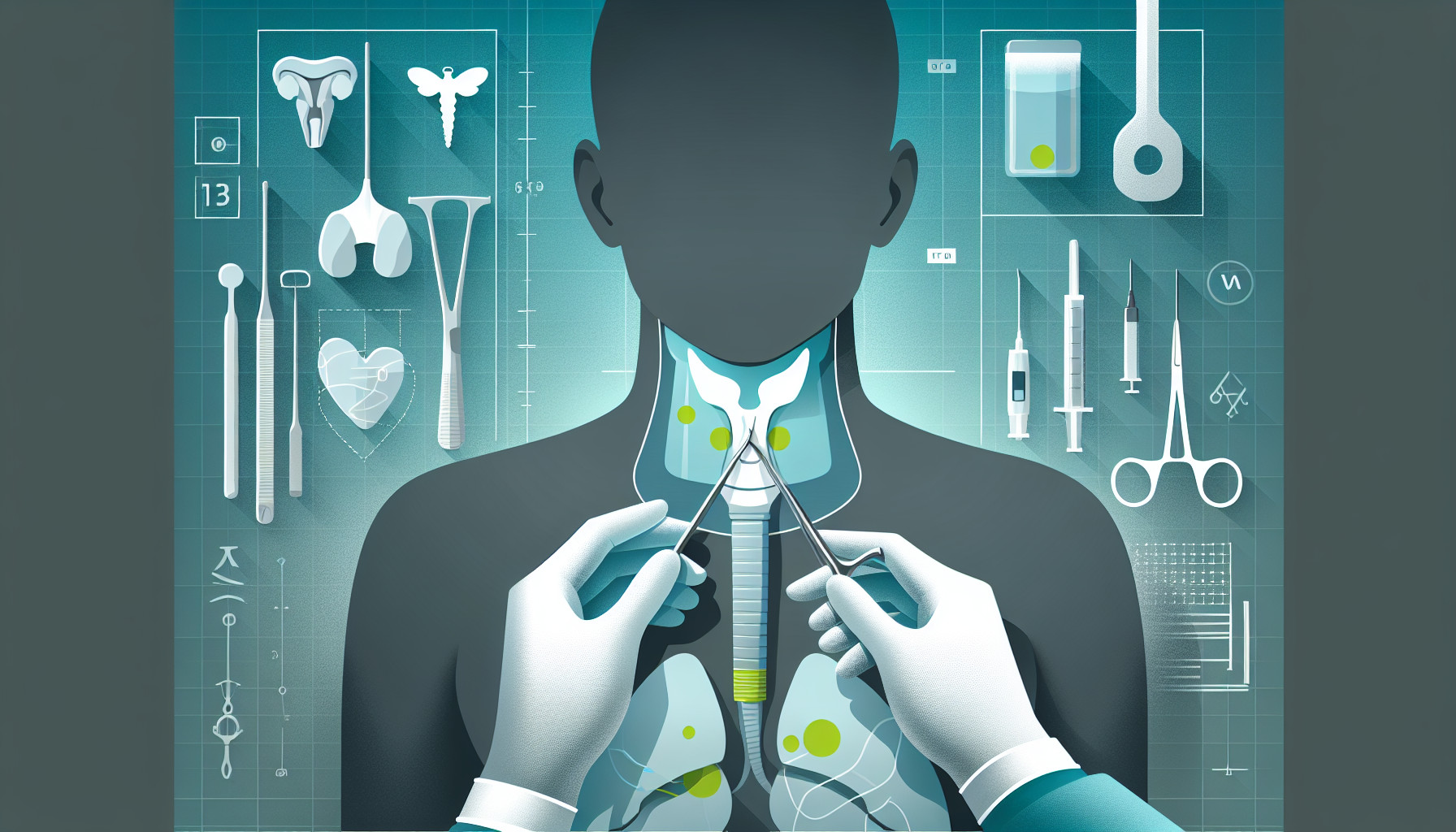Our Summary
This research paper discusses a new ‘scarless’ way of performing thyroid surgery, called Transoral Endoscopic Thyroidectomy Vestibular Approach (TOETVA). Traditionally, thyroid surgery leaves a visible scar on the front of the neck, which patients often find unattractive. The study was conducted by three surgeons in Western Australia on 102 patients between March 2018 and May 2021. The study found that this new method is safe and effective, with no major complications such as permanent nerve damage, infection, or bleeding. There were a few minor complications such as temporary nerve damage and low calcium levels, and in 4 cases the surgeons had to switch to the traditional open method. The paper concludes that with the right training and patient selection, this new method can be a great option for thyroid surgery. This is the first study of its kind in Australia and New Zealand, and the researchers hope it will encourage more surgeons to adopt this technique.
FAQs
- What is the Transoral Endoscopic Thyroidectomy Vestibular Approach (TOETVA)?
- What are the potential complications of the new ‘scarless’ thyroid surgery method?
- How often did the surgeons have to switch to the traditional method during the study?
Doctor’s Tip
A doctor might tell a patient undergoing a thyroidectomy to consider asking their surgeon about the Transoral Endoscopic Thyroidectomy Vestibular Approach (TOETVA) as a scarless alternative. This new method has been shown to be safe and effective, with fewer complications and a more aesthetically pleasing result compared to traditional thyroid surgery. It is important to discuss all available options with your surgeon to determine the best approach for your individual case.
Suitable For
Patients who are typically recommended thyroidectomy include those with:
Thyroid cancer: Patients with thyroid cancer may require a thyroidectomy to remove the cancerous cells and prevent the spread of the disease.
Benign thyroid nodules: Patients with benign thyroid nodules that are causing symptoms such as difficulty swallowing, breathing, or speaking may benefit from a thyroidectomy to alleviate these symptoms.
Hyperthyroidism: Patients with hyperthyroidism, a condition in which the thyroid gland produces too much thyroid hormone, may require a thyroidectomy to reduce hormone levels and alleviate symptoms.
Large goiters: Patients with large goiters, which are enlarged thyroid glands that can cause difficulty swallowing or breathing, may benefit from a thyroidectomy to remove the enlarged gland.
Recurrent thyroid nodules: Patients with recurrent thyroid nodules that continue to grow or cause symptoms despite treatment may require a thyroidectomy to remove the nodules and prevent further complications.
It is important for patients to discuss their individual case with their healthcare provider to determine if thyroidectomy is the best treatment option for their specific condition.
Timeline
Before Thyroidectomy:
- Patient undergoes a series of tests to assess thyroid function and determine the need for surgery.
- Patient meets with an endocrinologist and a surgeon to discuss the procedure and potential risks.
- Patient may need to stop certain medications or supplements prior to surgery.
- Patient undergoes pre-operative preparations such as fasting and anesthesia evaluation.
After Thyroidectomy:
- Patient wakes up in the recovery room with a bandage around their neck.
- Patient may experience some pain and discomfort, which can be managed with pain medication.
- Patient is monitored for any complications such as bleeding or infection.
- Patient may need to stay in the hospital for a few days for observation.
- Patient is instructed on post-operative care, including wound care, medication management, and follow-up appointments.
- Patient may experience temporary changes in voice, swallowing, and calcium levels.
- Patient gradually resumes normal activities and diet as advised by their healthcare provider.
- Patient attends follow-up appointments to monitor thyroid function and healing progress.
What to Ask Your Doctor
Can you explain the Transoral Endoscopic Thyroidectomy Vestibular Approach (TOETVA) in more detail?
What are the potential benefits of TOETVA compared to traditional open thyroid surgery?
What are the potential risks and complications associated with TOETVA?
How experienced are you in performing TOETVA procedures?
How do I know if I am a suitable candidate for TOETVA?
What is the recovery process like after TOETVA surgery?
Will I still need to take thyroid medication after the surgery?
Are there any long-term effects or implications of choosing TOETVA over traditional thyroid surgery?
How often do you perform TOETVA procedures, and what is your success rate?
Are there any alternative treatment options for my thyroid condition that I should consider before opting for surgery?
Reference
Authors: Pradhan S, Fernando DT, Tien A, Wong SL, Yew MK. Journal: ANZ J Surg. 2023 Mar;93(3):545-549. doi: 10.1111/ans.18185. Epub 2022 Dec 16. PMID: 36524584
